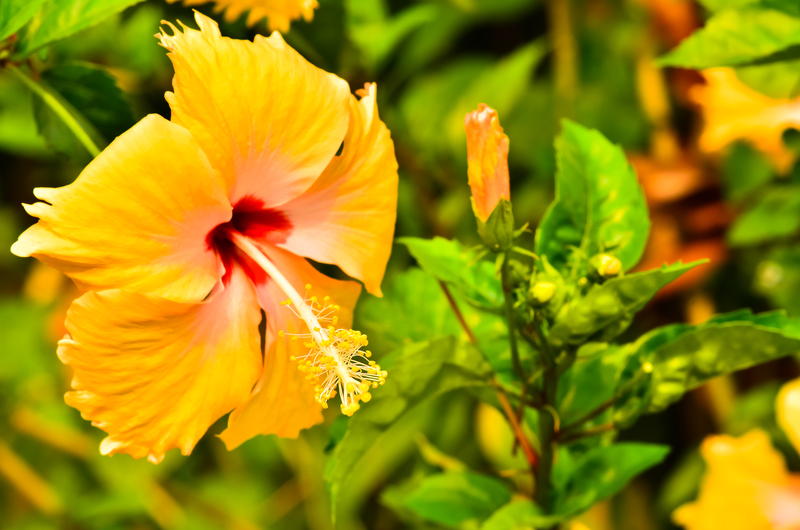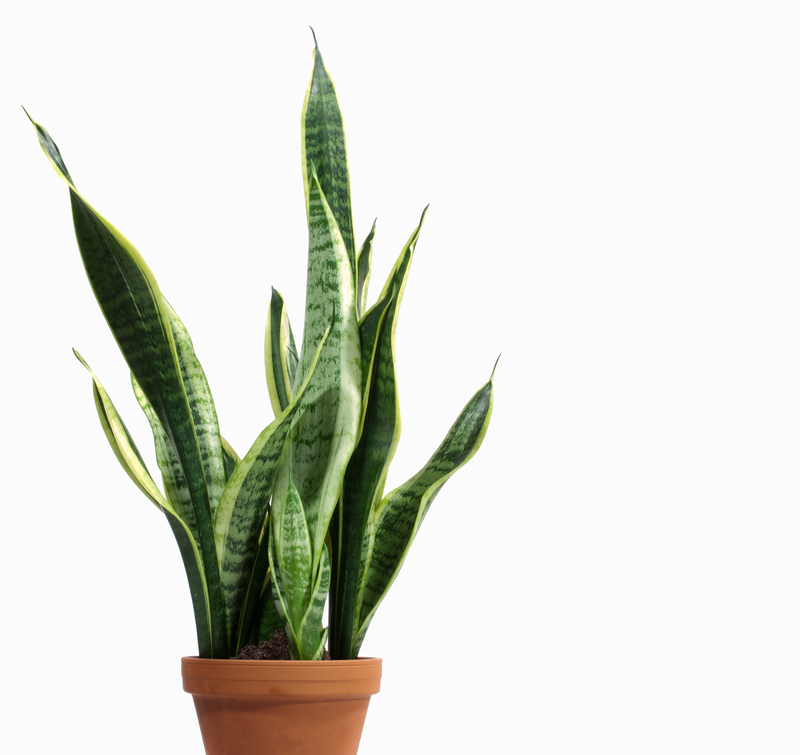Tips for Ensuring Your Garden Is a Haven for Dogs
Posted on 01/06/2025
Tips for Ensuring Your Garden Is a Haven for Dogs
Creating a dog-friendly garden is essential for any pet owner who values both the well-being of their canine companions and the beauty of their outdoor space. Ensuring your garden is a haven for dogs means blending safety, fun, and eco-friendliness into a cohesive, beautiful landscape. Whether you have a lively puppy or a senior dog, these comprehensive tips will help you strike the perfect balance between style and functionality in your backyard oasis.
Understanding the Needs of Your Canine Friend
A dog-friendly garden is more than just a fenced space for pets. It should address your dog's physical, psychological, and sensory needs. After all, your backyard is your dog's world--a place to play, explore, relax, and even learn. Below are some key areas to consider before you start redesigning your garden:
- Safety: Prevent exposure to dangerous plants, toxic chemicals, and escape routes.
- Stimulation: Offer interactive elements that encourage agility, sniffing, and play.
- Comfort: Provide shelter, shade, and soft surfaces for lounging.
- Accessibility: Design spaces suitable for dogs of all sizes, ages, and abilities.

Dog-Proofing Your Garden: The Essentials
Secure Your Boundaries
The foundation of a safe backyard for dogs is a secure perimeter. Dogs are natural explorers, and an unsecured garden can be risky. Here's how you can protect them:
- Fence Height: For most breeds, a 5-6 foot high fence is ideal. Jumping and digging breeds may require taller or reinforced barriers.
- No-Gap Policy: Regularly check for loose or damaged panels and fill any gaps underneath fencing with embedded chicken wire or rocks to prevent digging escapes.
- Gates: Install self-closing, lockable gates and consider a double-gate (dog airlock) system to reduce the risk of accidental escapes.
Prioritize Non-Toxic Plants and Landscaping Material
One major aspect of making your garden dog-safe is choosing pet-friendly flora. Unfortunately, many popular plants are toxic to dogs. Here's what to do:
- Avoid Toxic Plants: Remove or fence off plants like foxglove, daffodil, tulip, oleander, and sago palm. Instead, opt for sunflowers, snapdragons, asters, and marigolds, which are safe for pets.
- Mulch Carefully: Some mulch--especially cocoa mulch--is dangerous for dogs. Use cedar or pine mulch as an alternative, and always avoid sharp gravel.
- Pesticide Safety: Only use pet-safe, organic fertilizers and avoid chemical herbicides or pesticides. Always follow the manufacturer's instructions about pet re-entry times.
Comfort and Entertainment: Making the Garden a Canine Paradise
Designate Play Zones
Dogs thrive on routine and stimulation. Divide your yard into zones for different activities to keep things exciting and orderly:
- Open Space: Allow for a generous grassy area for running, fetching, and rolling. Artificial turf can be a good low-maintenance solution if you choose dog-specific products.
- Agility Equipment: Add obstacles such as tunnels, ramps, weave poles, and hoop jumps for fun training sessions. Repurpose logs or rocks for natural climbing structures.
- Digging Pit: Redirect digging tendencies by providing a "legal" digging spot filled with sand and hidden toys or treats.
Create Shelter and Shade
A truly dog haven garden must offer respite from the sun and harsh weather. Here's how:
- Shade Structures: Plant trees or add canopies, pergolas, or shade sails in key locations. Doghouses and insulated shelters are a must for extreme climates.
- Cool Retreats: Consider raised beds, cool tiles, or self-cooling mats in shaded areas. In summer, a shallow paddling pool provides hydration and play.
Water Features
Dogs love water for drinking, cooling off, and even playing. Incorporate features that are safe and accessible:
- Fresh Water Stations: Place bowls or pet water fountains out of direct sun. Refill and clean them daily.
- Puppy Pool or Splash Pad: Non-slip, shallow pools let your dog splash and wade in safety. Never leave dogs unsupervised around deeper water features.
Sensory Stimulation: Engage Your Dog's Instincts
Scent Gardens
Dogs interact with the world primarily through their noses. A sensory-rich garden will keep their minds active and reduce boredom.
- Herbs and Aromatics: Incorporate dog-safe plants such as lavender, rosemary, thyme, and mint. These offer calming and enriching scents.
- Snuffle Paths: Leave leaf piles or tall grass patches where your dog can explore hidden smells, insects, or treats.
Pathways and Trails
Encourage exploration with winding paths made from soft, paw-safe materials like grass, bark, or smooth flagstones. Dogs enjoy following clear "runways" along fence lines and garden edges.
Ensure Dog Health and Garden Hygiene
Pet Sanitation Stations
Maintaining a clean, dog-friendly garden keeps both dogs and their humans happy and healthy:
- Designate a Toilet Area: Assign a specific corner with gravel or sand for your dog to relieve themselves. Train them with reward-based methods for quick results.
- Waste Disposal: Install pet waste bins and clean up promptly to prevent unsanitary conditions and odor.
- Regular Cleaning: Rinse down paved areas and artificial turf, and occasionally turn over soil in digging spots to prevent bacterial buildup.
Address Flea and Tick Risks
- Keep the Grass Short: Regular mowing discourages ticks from setting up home.
- Discourage Wildlife: Fence out deer and rodents that can bring parasites into your garden.
- Use Natural Repellents: Sprinkle food-grade diatomaceous earth or plant tick-repelling species like lavender, rosemary, or marigold around the garden's perimeters.
Choosing the Right Materials
Paw-Friendly Surfaces
Paws are sensitive--avoid rough, hot, or sharp materials when laying garden paths and play areas. Consider these:
- Soft Lawns: Natural grass is ideal, but ensure it's robust, such as fescue or buffalo grass, which can withstand heavy dog traffic.
- Artificial Turf: Opt for pet-grade artificial turf that resists odors and is easy to clean.
- Mulched Beds: Use pine bark or cedar chips, but avoid cocoa mulch.
- Paving Stones: Space smooth flagstones apart to allow for grass growth, offering a cool walking surface for sensitive paws.
Enhancing Your Garden Aesthetics Without Compromising Pet Safety
Stylish Yet Safe Fencing
- Wrought Iron or Vinyl: Slat gaps should be small enough to prevent your dog's head from squeezing through.
- Living Fences: Use hedges or dense shrubs as natural barriers, ensuring the chosen plants are non-toxic to dogs.
Dog-Friendly Plant Borders
Plant borders that can withstand trampling. Hardy species like boxwood, lavender, and rosemary also help deter fleas and ticks naturally.
Ornamental Features
Add garden art, statues, or raised flowerbeds--but ensure sharp edges and loose stones are out of canine reach. Use non-toxic paints and finishes on all garden decor.
Seasonal Maintenance Tips for a Year-Round Dog Haven
Spring and Summer
- Check for Ticks and Fleas: Conduct daily checks, particularly after walks or garden play.
- Pruning and Weeding: Keep plants trimmed and remove any fallen berries or leaves that might be toxic.
- Water Management: Ensure all outdoor water bowls are fresh, and empty pools or water features nightly to prevent insects and contamination.
Autumn and Winter
- Leaf Management: Rake up leaf piles to prevent mold and fungus buildup.
- Slip Hazards: Clear icy or wet leaves from paths to stop doggy slips.
- Winter Shelter: Ensure kennel or shelter is insulated, raised from wet ground, and has cozy bedding.
Training and Supervision: Fostering Respect for Your Garden
Boundary Training
Use consistent cues and rewards to teach dogs which areas are out-of-bounds. Fencing off vegetable beds or delicate flower borders can reinforce boundaries while keeping landscaping intact.
Discourage Digging and Chewing
- Provide Chew Toys: Place sturdy toys or treat puzzles in shaded areas to redirect destructive tendencies.
- Allocate Digging Spots: Bury favorite toys or treats in a sanctioned digging pit and praise digging there.
Supervise Young or New Dogs
Until your dog understands house and garden rules, supervise outdoor time. Gradually increase freedom as their training sticks.

Involve Your Dog in the Gardening Routine
- Let Your Dog Watch and Participate: Dogs love being near their humans. Allow them to sniff, fetch, or dig in approved spots as you tend to the plants.
- Regular Exercise: A tired dog is less likely to get into trouble. Schedule daily games and walks to meet their energy needs.
Summary: Transforming Your Yard into a Dog-Loving Haven
Ensuring your garden is a haven for dogs goes beyond basic pet-proofing--it's about nurturing a space that supports wellness, adventure, comfort, and joy for every member of the family, furry or otherwise. By prioritizing safe landscaping for dogs, enriching the environment with interactive features, and paying attention to hygiene and seasonal care, you'll create a backyard that's as inviting for your canine companions as it is beautiful for you.
Remember, every garden--and every dog--is unique. Observe your pet's preferences, adapt features to suit their age and energy level, and enjoy the process of watching your dog-friendly garden become your dog's favorite place to be.
Now that you have these practical tips and thoughtful insights, you're ready to cultivate a paw-perfect sanctuary--where wagging tails and vibrant foliage thrive in harmony!

